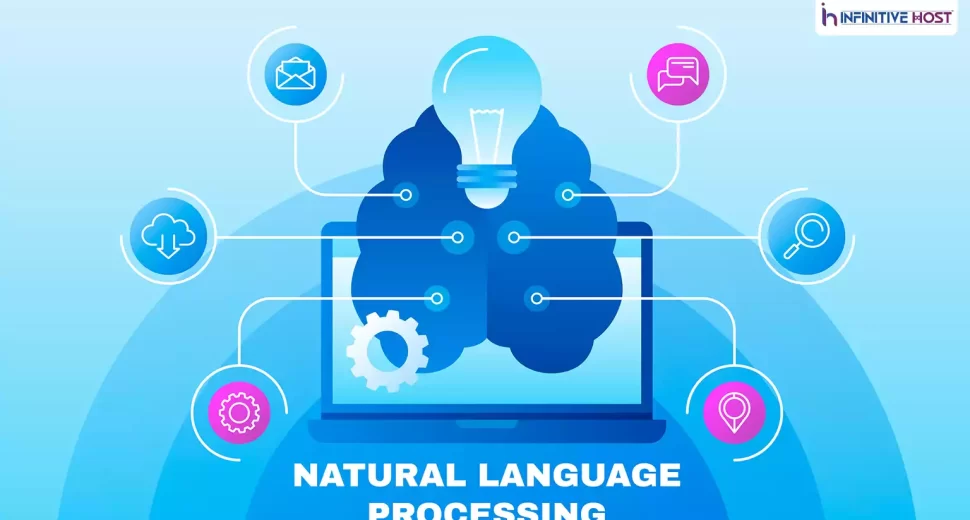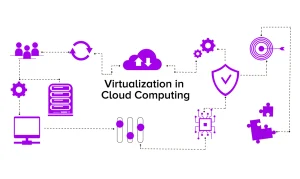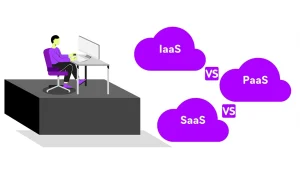I. Introduction
A. Brief explanation of Natural Language Processing (NLP)
The capacity to comprehend and process spoken language has become more important in today’s technologically advanced society. The goal of Natural Language Processing (NLP), a subsection of AI, is to teach computers to read, interpret, and act intelligently on human language. The field of natural language processing (NLP) includes many different methods and algorithms that help with things like language translation, sentiment analysis, and interacting with chatbots.
B. Importance of NLP in understanding human language
The ability to absorb and interpret language efficiently paves the way for new applications in artificial intelligence. The use of natural language processing (NLP) allows robots to have more human-like interactions with people. Healthcare, customer service, education, and research are just few of the fields that stand to benefit greatly from this discovery.
C. Thesis statement: Advances in NLP have empowered AI to comprehend and interpret human language more effectively.
The development of NLP techniques has greatly improved AI’s capacity to comprehend and respond to spoken language. Using NLP’s advanced algorithms and deep learning approaches, AI systems can now understand grammatical, contextual, and semantic nuances. With these advancements, a wider range of applications have been able to benefit, including chatbots, language translation, sentiment analysis, and text production.
II. Historical Overview of NLP

A. Early beginnings of NLP and its limitations
Natural language processing (NLP) has its origins in the 1950s, when scientists first started investigating the feasibility of machine translation. However, because to the ambiguity and complexity of human language, early efforts encountered several obstacles. Rule-based methods have always had difficulty dealing with the complexities of syntax, context, and semantic comprehension.
B. Key breakthroughs in NLP research and development
Major advances in the field throughout time have pushed NLP ahead. More precise language processing became possible with the advent of statistical technologies in the 1990s. Improved linguistic comprehension was made possible by the advent of researchers’ use of massive text corpora to extract patterns and statistical models.
C. Evolution of NLP techniques and algorithms
Recent years have seen a rise in the sophistication of NLP approaches, thanks in large part to increases in processing power and the availability of massive volumes of textual data. In order for machines to learn from data and create more precise predictions, machine learning methods like deep learning and neural networks have been revolutionary for natural language processing.
III. Core Components of NLP

A. Text preprocessing: Tokenization, stemming, and normalization
Textual data must go through preparation before any analysis can be performed. Tokenization, stemming, and normalization are all steps in this process. Tokenization entails breaking down a string of text into its component words or tokens, while stemming and normalization return the words to their standardized root forms.
B. Syntax and grammatical analysis
To decipher the grammatical structure of a phrase, NLP systems use a variety of strategies. This aids with the recognition of subject-verb agreements, noun phrases, and other syntactic components necessary for language understanding.
C. Named Entity Recognition (NER) and Part-of-Speech (POS) tagging
Named entity recognition (NER) is the process of analyzing text for the presence of named entities, such as names of people, places, organizations, and dates. POS tagging annotates words with grammatical labels, which clarifies their syntactic responsibilities and interrelationships in a given phrase.

D. Sentiment analysis and emotion detection E. Word sense disambiguation and semantic analysis
By analyzing the positive, negative, or neutral emotional tone of written content, artificial intelligence (AI) systems may do sentiment analysis. Taking it a step further, emotion recognition is able to identify distinct feelings expressed in text, such as happiness, rage, or sorrow.
E. Word sense disambiguation and semantic analysis
Words may signify different things in different settings. Word sense disambiguation is one kind of natural language processing that may be used to ascertain the intended meaning of a word in a certain setting. Through capturing the larger context and connections between words, the semantic analysis seeks to grasp the meaning of text beyond individual words.
Related:- AI Powered being chatbot a revolution in search pattern
IV. Deep Learning in NLP

A. Introduction to deep learning and neural networks
Deep learning, a kind of machine learning, has had far-reaching effects on the development of natural language processing (NLP). Neural networks, which are mathematical models based on how the human brain functions, are used in this process. Neurons are the nodes of a neural network, and they process and relay information across several levels of processing.
Deep learning models have been shown to be very useful in the field of natural language processing (NLP) for accurately representing the subtleties and complexities of human speech. These algorithms can produce good predictions by automatically extracting important elements from large volumes of text data.
B. Application of deep learning in NLP tasks
1. Recurrent Neural Networks (RNNs) for sequence modeling
Recurrent neural networks (RNNs) are a form of neural network that excel at sequential data applications including language synthesis, machine translation, and voice recognition. Because of their recurrent connections, they can remember data from before, which allows them to understand relationships between words and phrases.
In the field of language production, for instance, RNNs may be taught to use enormous text corpora to produce phrases that make sense and are appropriate for the given context. This has allowed for the development of new kinds of software, such as recommendation systems that are tailored to each individual user’s tastes.
2. Convolutional Neural Networks (CNNs) for text classification
In addition to its success in computer vision, CNNs have proven useful in text categorization and other NLP applications. Using convolutional processes, CNNs are able to accurately capture word-level patterns and correlations in text.
Classifying text into categories or groups that have already been established is called text classification. For applications like sentiment analysis, spam detection, and topic categorization, CNNs may learn to recognize crucial text characteristics like n-grams and key word pairs.
3. Transformer models and attention mechanisms
The emergence of transformer models as a revolutionary architecture in NLP has had a profound impact on fields like machine translation and language comprehension. down order to handle textual material efficiently, transformers use a self-attention mechanism to zero down on key phrases and words.
There has been a dramatic improvement in language comprehension with the advent of transformer-based models like the well-known BERT (Bidirectional Encoder Representations from Transformers). Models like this are particularly effective in answering questions, classifying documents, and recognizing names because of their ability to record complicated connections between words and to deal with ambiguity in context.
Case studies showcasing the effectiveness of deep learning in NLP
Several prominent case studies demonstrate the efficacy of deep learning in NLP. Most notably, Google’s AlphaGo used deep learning methods to beat the best Go players in the world. The system’s deep learning capabilities allowed it to assess and comprehend intricate Go game situations, resulting in game-changing strategic ideas.
OpenAI’s GPT (Generative Pre-trained Transformer) is one example of a language model in development. Various applications, from content production to virtual assistants, are made possible by GPT’s impressive powers in creating human-like language and finishing phrases.
V. Language Models and their Impact

A. Introduction to language models
Artificial intelligence models may be taught to understand context and estimate the likelihood of a string of words using what is known about that context. These models study the statistical features of language and then produce writing that makes sense and fits its environment.
B. Pre-trained models: GPT, BERT, and others
The use of pre-trained language models, such as GPT and BERT, which make use of massive amounts of data and high-powered computational infrastructure, has completely disrupted the NLP field. Due to their extensive online-text-based training, these models are able to acquire sophisticated linguistic representations and accurately capture subtle linguistic subtleties.
C. Transfer learning and fine-tuning of language models
Pre-trained language models benefit greatly from transfer learning. With transfer learning, we may take use of the language and domain-specific information stored in previously-trained models without having to re-train them from start. This drastically lowers the amount of processing resources and training data needed to perform well on novel jobs.
D. Applications of language models in various NLP tasks
1. Text generation and completion
The possibilities for text creation and completion that language models have made possible are quite promising. Language models can produce logical and contextually appropriate text when given a prompt or an incomplete phrase. This may be used in many contexts, including automatic content creation and code completion.
2. Question answering and chatbots
The effectiveness of question-answering robots and chatbots has been boosted by the development of language models. They are capable of analyzing a question’s context in order to respond appropriately. Conversations using language-model-enabled chatbots seem more human, allowing them to provide more tailored help and support to individual users.
3. Machine translation and summarization
Machine translation has been greatly improved by the development of language models. Improvements in translation quality are possible via the use of pre-trained models and subsequent adjustment for specific translation workloads. Information extraction and content summarizing are two further areas where language models are useful.
Related:- How ChatGPT, Bard & AI will revolutionize the way we search?
VI. Challenges and Ethical Considerations
A. Bias in NLP and its impact on marginalized communities
The strength of NLP and AI systems comes with the drawback that they are not unbiased. Existing social biases and prejudices may be reinforced by the biased data used to train these algorithms. This presents challenges, especially for already vulnerable groups who may be subjected to bias or inequality. Tackling these biases requires vigilant data selection, rigorous model review, and constant ethical reflection.
B. Privacy concerns with large-scale language models
It’s possible that language models trained on massive volumes of data can unwittingly pick up on personally identifiable information that’s included in the training data. This makes me worried about my personal information and privacy. When putting language models into production, it is crucial to protect user information and ensure its proper management.
C. Mitigating risks and ensuring responsible use of NLP technologies
A multidisciplinary strategy is required to reduce potential dangers and guarantee the ethical use of NLP technology. Guidelines and frameworks that handle possible biases, privacy problems, and the social effect of NLP applications need close cooperation between academics, politicians, and ethicists. Building confidence and addressing ethical concerns are additional benefits of promoting openness and accountability in the creation and rollout of NLP systems.
VII. Future Directions and Potential Applications
A. Emerging trends in NLP research
New areas of study and technological advances are constantly pushing natural language processing forward. Multi-modal language understanding (combining text with visuals or audio) and the use of external information sources to improve language comprehension are two rising topics.
B. Advancements in multilingual NLPC. NLP in healthcare, customer service, and other industries
This has led to multilingual NLP being recognized as an important topic of study. Developments in multilingual NLP have assumed more significance due to the increasingly international character of communication and the consequent requirement to analyze text in more than one language.
Recent developments in multilingual NLP, however, have overcome these obstacles. Models of language learning have been created to discover commonalities across languages, with names like mBERT (Multilingual BERT) and XLM (Cross-lingual Language Model). Effective cross-lingual text interpretation and creation is made possible by these models’ ability to process a wide range of languages and to transfer acquired information from one language to another.
There will be far-reaching effects of multilingual NLP. It makes it easier for consumers to get information in their native language, regardless of the language used to create the original query. Businesses may benefit from multilingual sentiment research by learning how customers feel in various marketplaces and languages. The development of multilingual natural language processing has also tremendously aided machine translation systems, allowing for more natural and precise translations across languages.
VIII. Conclusion
A. Recap of the significance of NLP and AI in understanding human language
In conclusion, advancements in NLP and AI have allowed computers to make great progress in comprehending and using human language. From its rule-based beginnings to the present day of deep learning and neural networks, NLP has brought about a sea change in the way computers understand and interact with human communication. Now that AI systems have access to more advanced algorithms and models, we may get closer to the ideal of seamless human-machine communication by addressing the thorny issues of grammar, context, and semantics.
B. Key takeaways from the advancements in NLP
Recent developments in natural language processing (NLP) have improved AI’s ability to understand spoken language, opening up new domains of use. Notable Learnings
Recurrent neural networks (RNNs) and convolutional neural networks (CNNs) are examples of deep learning methods that have been included into NLP systems, greatly enhancing their ability to comprehend and generate natural-sounding text. In order to provide more accurate and contextually appropriate outcomes, these models take into account context, semantics, and long-range relationships.
Pre-trained language models, such as GPT and BERT, have revolutionized natural language processing by using massive volumes of data to acquire rich linguistic representations. These models have expanded the capabilities of AI in the realm of language comprehension, revolutionizing jobs like text production, question answering, and machine translation.
Translation and interpretation between languages are now possible because to developments in multilingual natural language processing. mBERT and other multilingual word embedding models have made it easier for people to communicate and find information in a variety of languages.
Ethical considerations for NLP technology to be used in a responsible manner, issues like as prejudice, privacy, and impartial results must be addressed. It is essential that academics, politicians, and ethicists work together to reduce any negative consequences and maximize the positive social outcomes of NLP technology.
C. Encouragement to explore the limitless possibilities of NLP and its potential impact on society
Considering how far NLP has come, it’s exciting to think of everything that is ahead. Natural language processing (NLP) has the potential to revolutionize many different sectors and enhance human-machine communication. In healthcare, for example, NLP systems driven by artificial intelligence may improve diagnostic accuracy and offer more targeted therapies. Chatbots and other virtual assistants may improve customer service by responding to individual needs more quickly and accurately. Natural language processing (NLP) may be used to create smart tutoring systems and improve language instruction.
We call on academics, developers, and policymakers to work together and keep pushing the limits of innovation in order to fulfill NLP’s full potential. By funding responsible and ethical research and development, we can create AI systems that can accurately identify and meet the requirements of a wide range of user demographics. It’s crucial that these tools be easily available, neutral, and protective of users’ personal information.
Finally, because to NLP’s development, artificial intelligence is now better able to understand and interpret human language, drastically altering our interactions with computers. Smooth human-machine interaction is a continuous process that will need our combined efforts to overcome obstacles and fully realize NLP’s promise for social good. Informed by ethical concerns, let’s embrace this technology and move toward a world where AI knows humans as naturally as we understand each other.









